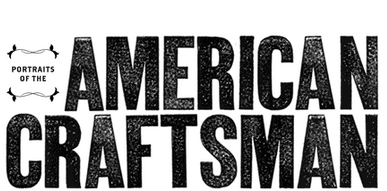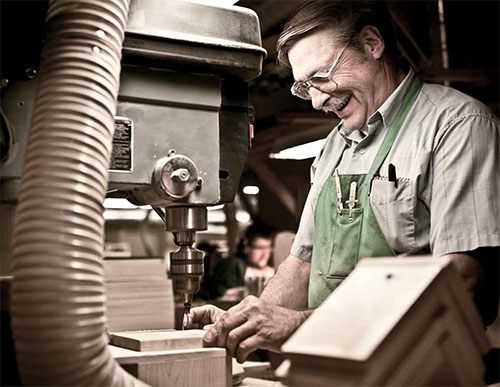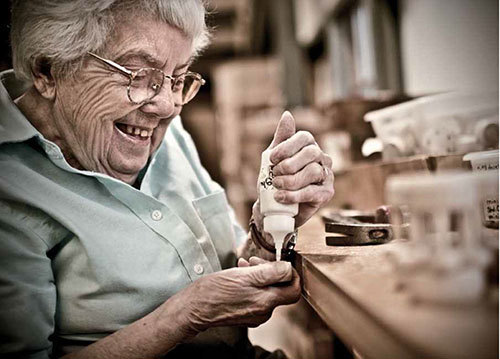Maple Landmark Woodcraft: made in Vermont.
The regulars who frequented the Rainvilles’ general store in Lincoln, Vermont, knew young Mike’s story. His parents had given him a corner to sell the small toys and knickknacks he built after school.
In junior high, bored and restless, Mike was given a block of wood by his mother and told to make a cribbage board. He took to the work quickly, fashioning it using only a coping saw, a hand drill, and a sanding block. His grandparents, who owned a maple syrup farm, helped him buy more tools to fashion wooden cars and toys, shadow boxes, even bobbin and spool holders for the town’s seamstresses.
The one person who didn’t know young Mike Rainville’s story was the traveling salesman who, upon examining the teenager’s handcrafted collection, announced he’d be happy to sell the toys to his retail customers. Like that, the seeds of a three-decade business were planted. Now Maple Landmark Woodcraft employs forty people and makes more than a thousand toys and knickknacks—everything from blocks, trains, and yo-yos to games, puzzles, and bookends, sold in more than two thousand stores across the United States.
Even as a young man, Mike Rainville was establishing patterns that would carry him through the future. Decades before the term “buy local” became fashionable, he was not only using the wood from nearby forests but also taking pride in producing the work from his hometown. He wood-burned “Lincoln, Vermont” along with his initials on early pieces; today “Made in Vermont” runs across his company’s logo.
“Even early on, I would try to figure out what would be the best way to make not just one cribbage board, but twelve cribbage boards,” he says. “Then quickly try to figure out how to best make twelve dozen.” His first solution: hire family. Not only were his father and grandfather carpenters, but working with loved ones also seemed the best way to achieve a life balance.
Today Mike’s wife, mother, and grandmother work at Maple Landmark in Middlebury, Vermont. The company moved down the road from Lincoln because their space had to be big enough (sixteen thousand square feet) to not only produce the most popular products (chatterbox blocks, toy cars, etc.) but also the occasional special orders—like during the Cabbage Patch craze when a New York couple wanted a custom-made twin crib for their daughter’s dolls.
Mike Rainville still gets his lumber locally. It doesn’t matter to him that the maple is harder to work with than what he could find farther south. It’s more important that he supports those nearby. “Customers want to know I’m buying it from here,” he says. “It’s an honest story.”
That “honest wood” usually enters the prep department first, where it’s cut to size, planed, and molded, depending on the project. It then goes to the cutting area, then to the sanding department. If it needs holes drilled, or slots put on for train tracks, this occurs before it hits the finish room. There the piece is sprayed, dipped, or silk- screened. Once the graphics department finishes any final engraving, cutting, or other decoration, the folks in assembling and packaging get the piece ready for shipping.
“We start with raw material in one door and finished product out the other. Making that in-between happen is the fun part,” Rainville says. “In crafting toys we are making things that will live an active life, not collect dust somewhere.”
In fact, you can still see some of the first toys he made, right on his bookshelf. “I didn’t keep them,” he says, laughing softly. “But I find ’em around town at garage sales now and then. And I always buy them when I do.”






